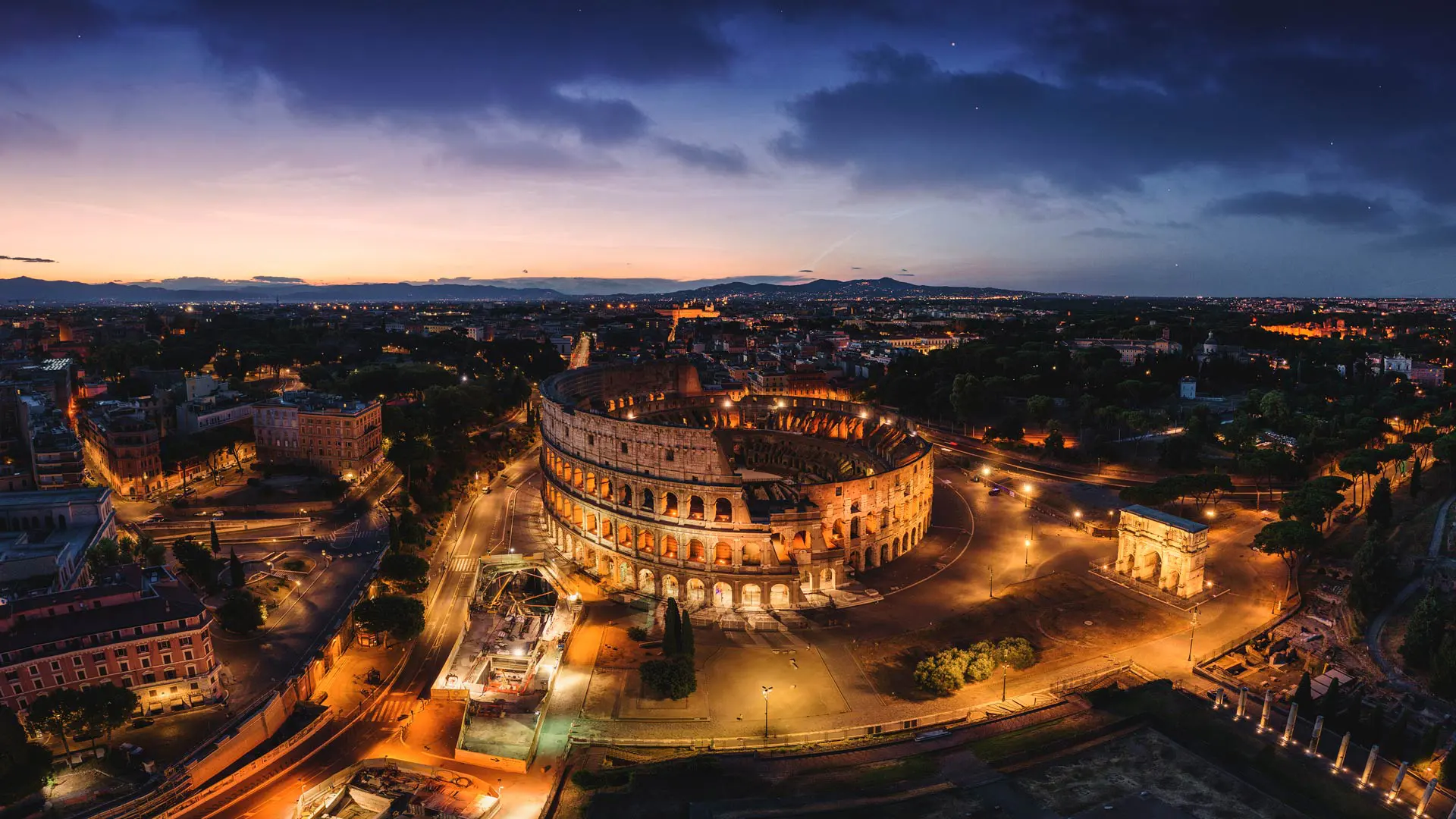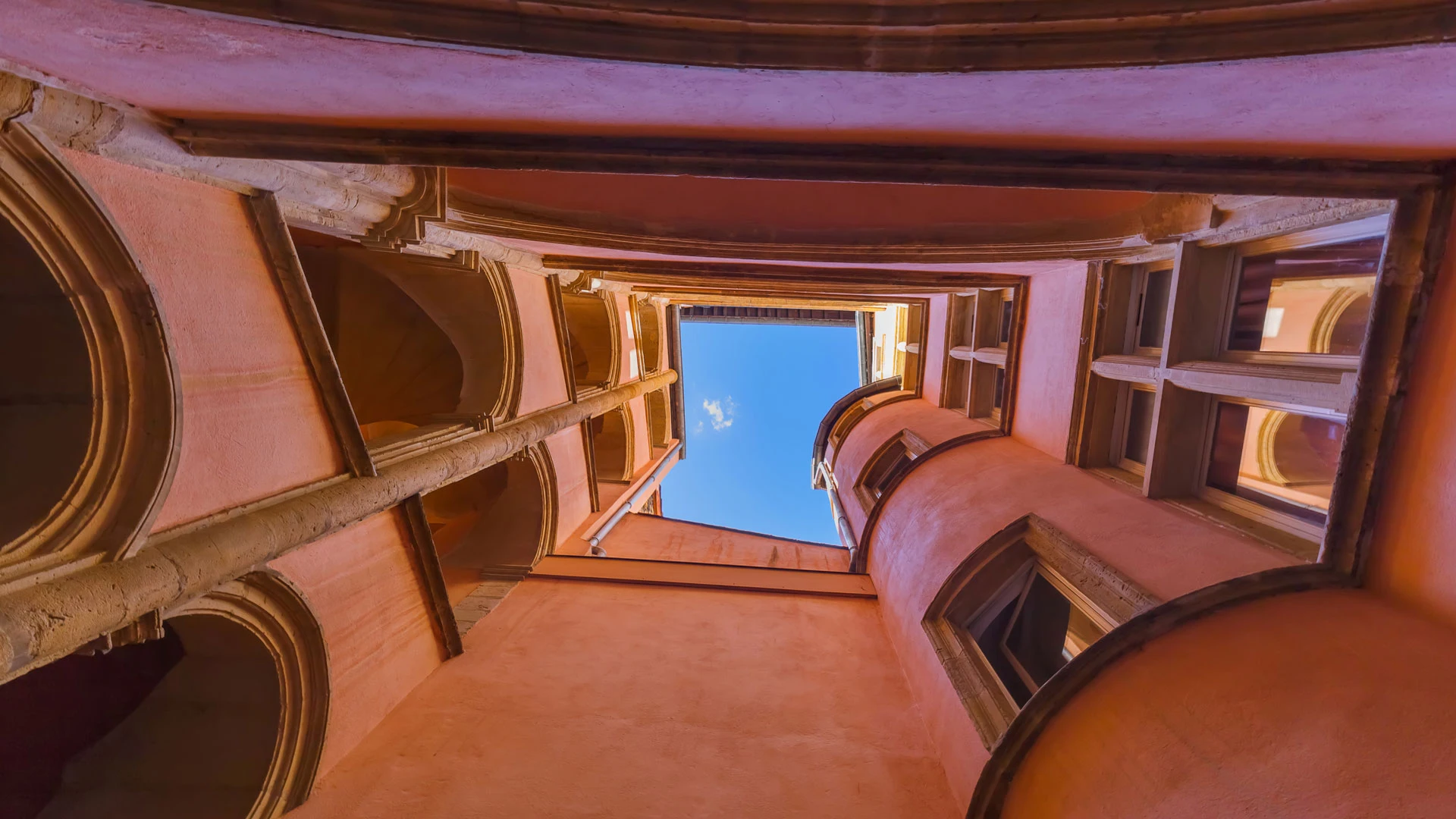
斗兽场鸟瞰图,罗马,意大利 Aerial view of the Colosseum, Rome, Italy (© Nico De Pasquale Photography/Getty Images)
条条大路通罗马 All roads lead to Rome
斗兽场,罗马,意大利
觉得现代体育赛事已经足够精彩了吗?在古罗马时代,观众们坐在斗兽场中目睹的表演要激烈得多。这座宏伟的圆形露天竞技场由罗马皇帝韦斯帕先于公元72年下令建造,其子提图斯于公元80年完工。与早期依山而建、借助地形支撑的剧场不同,罗马斗兽场完全独立矗立,是一座自成体系的建筑奇迹。斗兽场由石块与混凝土建成,拱门与穹顶结构支撑着可容纳多达5万名观众的竞技场。角斗士的搏斗、异国野兽的展示,甚至模拟海战,都令观众热血沸腾地下的升降机与暗门让场景转换瞬息万变,充满戏剧张力。
进入中世纪后,斗兽场被赋予了新的用途:曾一度被改作教堂,后来又成为堡垒。几个世纪以来,它经受了雷击、地震与污染的破坏。建筑中大量的石灰华与大理石被重新利用,修建宫殿、防御工事,甚至教堂。这种做法被称为“拆卸再利用”, 它让斗兽场的碎片真正融入了罗马这座不断演变的城市。直到19世纪,人们才开始对其进行系统的保护。如今,罗马斗兽场作为受保护的世界文化遗产,每年吸引近 700 万名游客,依然是意大利最具象征意义的地标之一,见证着古罗马的荣耀与永恒。
Colosseum, Rome, Italy
Think modern sports are dramatic? Ancient Romans had front-row seats to spectacles far more intense inside the Colosseum. Commissioned by the Flavian emperor Vespasian in 72 CE and finished by his son Titus in 80 CE, this amphitheater broke tradition with its predecessors that were built into hillsides for natural support. Instead, the Colosseum was a fully free-standing architectural giant. Crafted from stone and concrete, its arches and vaults supported an arena that could host up to 50,000 spectators. Gladiators, exotic animals, and even staged sea battles thrilled the crowds, while hidden elevators and trapdoors created sudden, dramatic appearances.
During the Middle Ages, the Colosseum found new purposes: first as a church, later as a fortress. Over the centuries, it endured damage from lightning strikes, earthquakes, and pollution. Much of its marble and travertine was also reused in palaces, fortifications, and even churches—a practice known as 'spolia,' which quite literally wove pieces of the structure into the evolving city of Rome. It wasn't until the 19th century that serious preservation began. Today, recognized as a protected monument and welcoming nearly 7 million visitors annually, the Colosseum remains one of Italy's most iconic landmarks.









